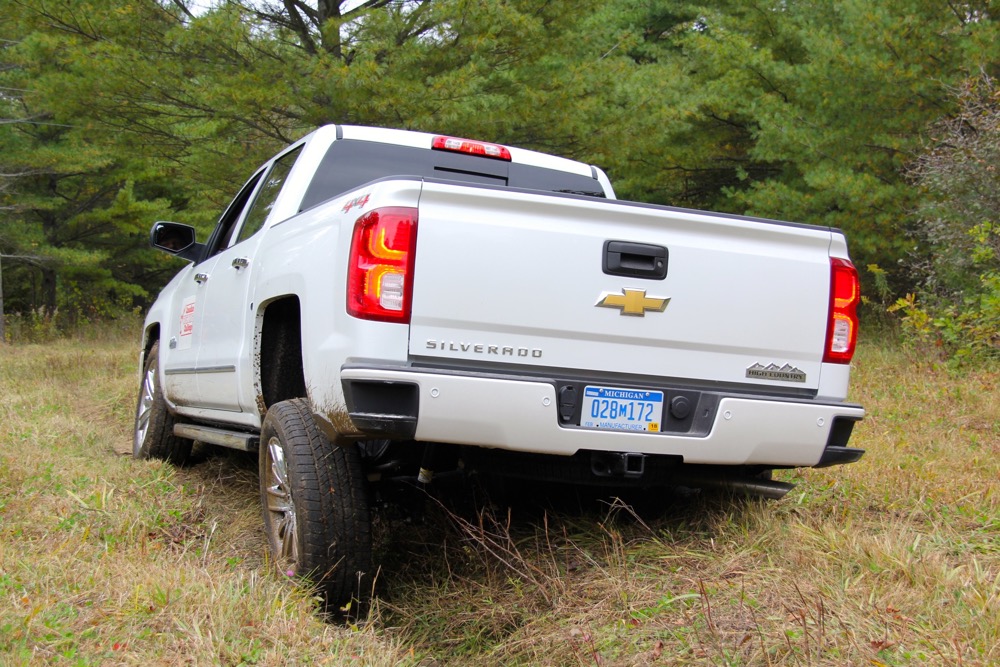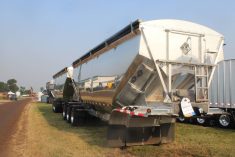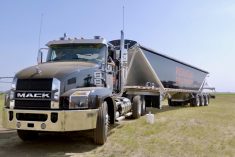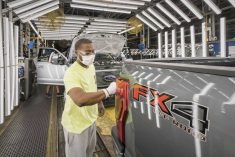When it’s time to bring home a new farm pickup truck, there are a lot of things to consider. For example, every new pickup on a dealer lot has a window sticker showing Transport Canada fuel mileage ratings. Trouble is, those mileage figures may not really reflect what a truck’s actual consumption will be on the farm.
And how do a truck’s features compare to what’s available in competitive models? It’s almost impossible to make a detailed comparison of trucks if you test drive one, then have to wait a couple of days to test another on a completely different route. And it’s unlikely any dealer would welcome you showing up for a test drive with a loaded trailer to measure a truck’s pulling ability.
There’s only one way to find out how today’s crop of half-ton trucks really compare with each other, and that is to operate each of them in exactly the same way on exactly the same roads. And make them do what farm pickups do: work.
That’s precisely what happens at the annual Canadian Truck King Challenge. This year Grainews was there and took part in the testing and judging. The major brands with something new to offer in the half-ton truck category each submitted a model for testing.
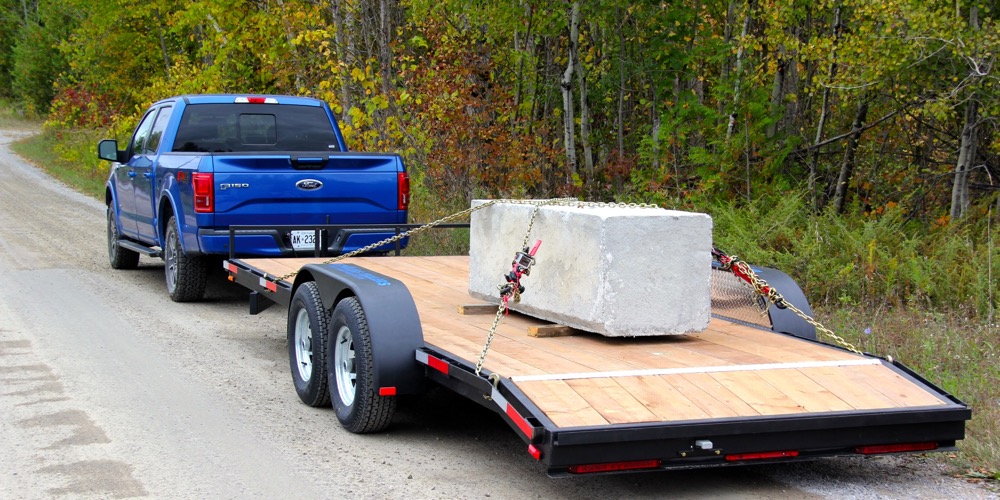
The contestants
Here’s who showed up:
Ford entered two F150s, one with a 2.7 litre EcoBoost V6 and six speed transmission, as well as another 3.5 litre version. A Ram 1500 with a 3.0 litre EcoDiesel-eight speed combination was there too. And lastly, GM delivered a pre-production Silverado with the 5.3 litre EcoTech3 V8 mated to an eight speed transmission.
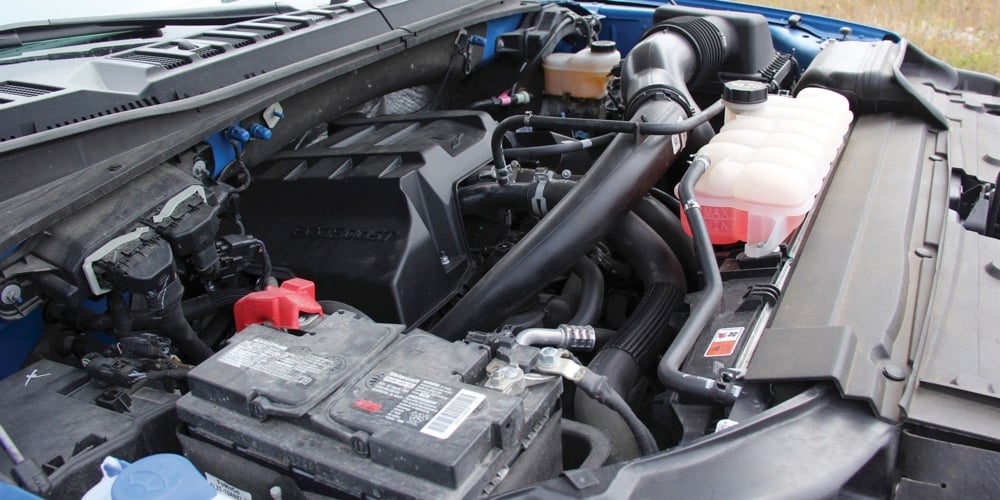
To evaluate exactly how these trucks perform and how much fuel they drink in the process, each of the four judges drove all the trucks along the same predetermined route under the same conditions. They were driven over an off-road course as well.
For the on-road portion of the test, trucks made the trip empty as their performance, ride and other characteristics were reviewed. Second, the trucks again drove the route with a 454 kilogram (1,000 pound) load in the bed. Third, a 2,727 kilogram (6,000 pound) trailer was hitched to the back, and the trucks were once again driven along the test route. To really simulate farm conditions, that route included both pavement and gravel roads in a rural area.
To provide an overall evaluation, judges rated a variety of features and characteristics, such as throttle response, handling and braking feel. Some of the categories rated required a little subjective opinion; but to compensate for that, all the scores were added up and averaged. An overall winner was declared based on the total scores.
The winners
The scores were close, reflecting just how good today’s crop of half tons really is; but the Ram 1500 EcoDiesel inched out victory by a few overall points, and three out of four judges rated it highest in the group. So the decision was almost unanimous.
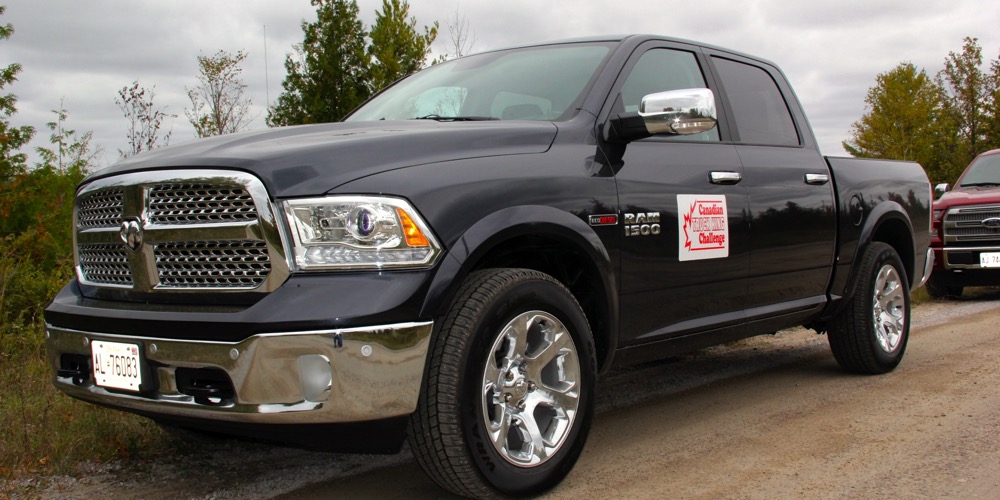
The Ram also had the lowest overall fuel consumption in the group, and by quite a bit. It averaged 9.76 litres per 100 kilometres across the entire testing period, roughly three litres less than the second-place 3.5 litre Ford gas engine. It achieved the lowest consumption numbers in every test.
All of the trucks seemed to excel in at least one or two areas.
Take the 2.7 litre Ford, for example. This relatively tiny engine showed impressive ability, even when pulling the trailer, much better than most judges expected. If, however, you believe there is no replacement for displacement, Chevy’s Silverado had the biggest power plant, and it was clear during the trailer towing test this V-8 had loads of torque. To help with fuel consumption, it has a cylinder shut down feature.
The updated Chevy has new front-end styling, which makes it a good looking truck, but the high hood would also make it the most difficult of the group to navigate through a parking lot with tight quarters. It just wasn’t as easy to see obstructions close to the front bumper on this truck as it was on the others.
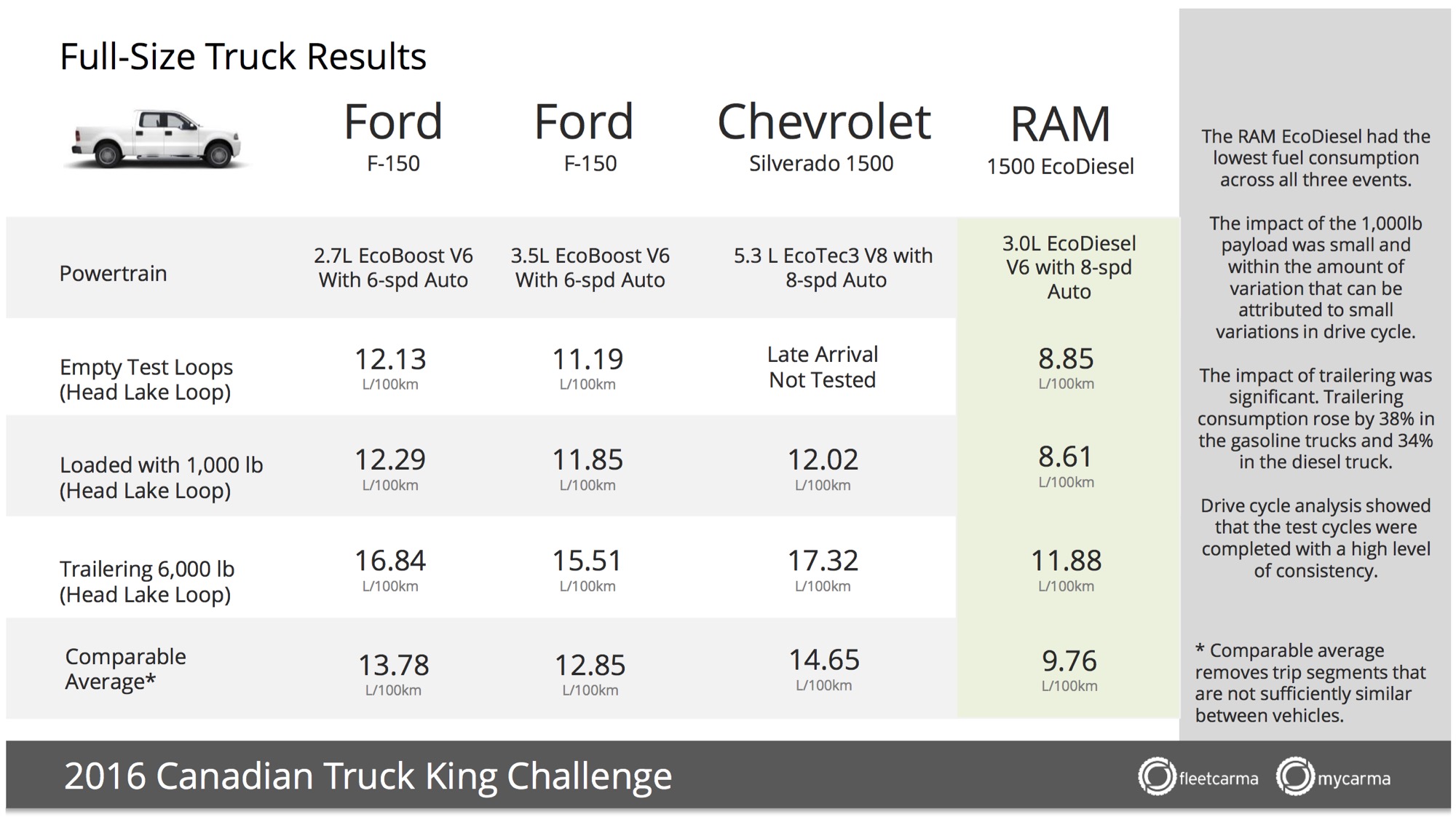
Looking for more? Check out our video on e-QuipTV at the Canadian Truck King Challenge.


